This article was co-authored by Luba Lee, FNP-BC, MS. Luba Lee, FNP-BC is a Board-Certified Family Nurse Practitioner (FNP) and educator in Tennessee with over a decade of clinical experience. Luba has certifications in Pediatric Advanced Life Support (PALS), Emergency Medicine, Advanced Cardiac Life Support (ACLS), Team Building, and Critical Care Nursing. She received her Master of Science in Nursing (MSN) from the University of Tennessee in 2006.
There are 17 references cited in this article, which can be found at the bottom of the page.
This article has been viewed 265,087 times.
Keratin is a class of fibrous proteins, and your outer layer of skin is mainly composed of this protein.[1] Sometimes your body malfunctions when producing keratin, and it builds up under a hair follicle near the top layer of skin; it then produces a plug that rises to the surface.[2] These plugs manifest as small, rough dots, often white or red, and the condition is called keratosis pilaris. Keratosis pilaris may look like tiny pimples on the upper arms, buttocks, or thighs. This condition, which runs in families, is harmless. However, you may want to find ways to reduce its appearance. Although you can't reduce keratin necessarily, there are ways to lessen the appearance of keratosis pilaris, including getting medical treatment, using exfoliants, and moisturizing your skin.[3]
Steps
Seeing Your Doctor
-
1Visit your doctor for a prescription. If you feel like your keratosis pilaris is an issue, talk to your doctor about treatment. Discuss your options to see what works best for you.[4]
- Your doctor may prescribe a topical medicine, such as lactic acid lotion (AmLactin or Lac-Hydrin), salicylic acid lotion (Salex lotion), retinoic acid products (Retin-A or Differin), urea cream (Carmol 10, 20, or 40), or alpha hydroxy acid lotion (Glytone).[5]
- Some of these treatments are designed to remove dead skin cells, while others prevent the buildup of cells in your follicles.
- Your doctor may also prescribe a steroid cream (such as triamcinolone 0.1%), which can reduce redness.[6]
-
2Ask about getting a chemical peel. Glycolic acid peels can help smooth out your skin and improve the appearance of keratosis pilaris. This treatment typically takes about 5-7 minutes.[7] While you can get over-the-counter glycolic acid peels, your doctor may be able to give you a stronger or more effective peel in their office.
- Your doctor can also examine your skin and determine if it’s safe to apply a peel, or apply additional treatments to make the peel more effective.[8]
Advertisement -
3Move up to emollient-based steroid creams. If other treatments do not work, your doctor may try an emollient-based steroid cream. Some creams in this class are Cloderm and Locoid Lipocream. You can only use these creams for about a week.[9]
-
4Ask about laser treatments. If your keratosis pilaris is very bothersome and doesn’t respond to other treatments, your doctor might suggest laser treatments or light therapy. These treatments can help reduce discoloration and improve your skin’s texture. They work best when combined with other treatments, such as microdermabrasion.[10]
- Another option is photodynamic therapy (PDT). Basically, this treatment uses light combined with a photosensitizer that you apply to your skin to work on the condition. However, using it for keratosis pilaris is an off-label use, so it may not be covered by your insurance.[11]
- While laser and light-based therapies may improve the appearance of your skin, they won’t actually cure keratosis pilaris or related conditions.
-
5Talk about using a retinoid cream. Retinoids are a form of vitamin A that you can apply to your skin as an ointment or cream. Your doctor may prescribe a retinoid, such as tazarotene, which you typically apply to your skin every night. Some studies show that these treatments can significantly improve keratosis pilaris over the course of a few weeks.[12]
- For more severe keratin disorders, oral vitamin A treatments, such as isotretinoin, may be helpful.[13] However, these medications can have serious side effects, so talk to your doctor about the possible risks.
Reducing Dryness
-
1Take baths and showers in lukewarm water. Do not use hot water when bathing or showering, as hot water dries out the skin and causes this particular skin condition to worsen. In addition, limit how long you are in the shower, as showering strips your body of its natural oils. But don't let this discourage you from showering. It's important to maintain good hygiene.[14]
- Limit your time in the bath or shower to about 10 minutes.
-
2Pick the right kind of soap. The best soaps are mild, hypoallergenic ones that have added oils. Look for "added moisturizers" or "moisturizing" on the package, as well as labels such as “hypoallergenic” or “for sensitive skin.” Skip ones that have antibacterial properties or that have added scents or alcohol.[15]
- Avoid bar soaps, which can be drying. Stick to milder cleansers, such as an unscented, moisturizing body wash.[16]
-
3Attempt gentle exfoliation. You don't want to scrub your skin raw. However, using a light exfoliant can help. An exfoliant just sloughs off the top layer of dead skin. Try a loofah or washcloth with your soap.[17]
- Reserve pumice stones and other harsh exfoliants for really rough areas, such as your feet.
-
4Use a moisturizer after showers. Every time you hop in the shower, make sure you use a moisturizer when you get out. The same holds for when you wash your hands. When you get your body wet, you need to be applying a moisturizer. Washing skin can remove natural oils, and applying a moisturizer immediately can help trap the water near your skin, providing moisture.[18]
- Apply your moisturizer while the skin is still damp, just after showering.
- Many of the medications used to treat keratosis are drying. Always moisturize after applying an acid lotion, retinoid, or urea cream or ointment.
- If you're having trouble with dry skin, pick a moisturizer that includes an oil or fat to help moisturize your skin.[19]
-
5Use moisturizers at least 3 times a day. In addition to applying moisturizer after you shower, you should also apply it throughout day. Try applying it both when you get up and when you go to bed. Slather some moisturizer on any time you notice your skin feeling dry during the day.[20]
-
6Pick natural fabrics. Natural fabrics are better for your skin because they allow air in. The exception to the rule is wool, which can be itchy. Stick to cotton or silk.[21]
- Rough or tight-fitting clothes can also irritate keratosis bumps, causing redness and inflammation. Try to wear light, loose clothing to minimize irritation.[22]
-
7Wash your clothes with natural detergents. When picking out your detergent, look for ones that are free of dyes. Dyes can irritate your skin. Similarly, it's good to pick one that's scent-free for the same reason.[23]
Using a Humidifier to Moisturize Skin
-
1Try a humidifier. A humidifier can help moisturize your skin, especially if you live in a dry climate.[24] The ideal humidity for your home is between 30% and 50%. If your home falls below that range, you should be using a humidifier to help your dry skin.[25]
- Put a portable humidifier in your room or other areas where you spend time, or attach a humidifier to the heating system in your home.
- If you need to test the humidity, you can find hygrometers at your local hardware store. They look and work basically like a thermometer. Some humidifiers come with a hygrometer attached.
-
2Keep your humidifier clean. It's important to keep your humidifier clean, because otherwise it can breed bacteria and fungus, making you sick. One step you can take to help keep it clean is to use distilled water, as it doesn't contain minerals that can encourage bacteria to grow.[26]
- Change out the water every day if possible. To change out the water, unplug the unit. Pour out the water. Dry out the reservoir, and then refill it with clean water.
- Clean it out completely every 3 days. Unplug the unit. Make sure the unit doesn't have mineral deposits by using hydrogen peroxide on it (3%). Rinse it out afterwards.
-
3Don't keep a humidifier forever. Even with proper care, humidifiers can build up bacteria over time. If you have an old one around the house, consider replacing it.[27]
-
4Put the humidifier where you spend most of your time. The point is to help your skin, and it can't do that if it's in a room you're not in much. A good choice is your living room or bedroom. If you can, consider having one in each room.
- Depending on where you live, you may also be able to install a central unit that humidifies your whole home.[28]
References
- ↑ http://www.britannica.com/science/keratin
- ↑ http://www.nhs.uk/conditions/keratosis-pilaris/Pages/Introduction.aspx
- ↑ https://www.aad.org/public/diseases/a-z/keratosis-pilaris-treatment
- ↑ https://www.aad.org/public/diseases/a-z/keratosis-pilaris-treatment
- ↑ https://www.mayoclinic.org/diseases-conditions/keratosis-pilaris/diagnosis-treatment/drc-20351152
- ↑ https://medlineplus.gov/ency/article/001462.htm
- ↑ https://www.ncbi.nlm.nih.gov/books/NBK546708/
- ↑ https://www.ncbi.nlm.nih.gov/pmc/articles/PMC3875240/
- ↑ http://emedicine.medscape.com/article/1070651-treatment
- ↑ https://www.aad.org/public/diseases/a-z/keratosis-pilaris-treatment
- ↑ http://emedicine.medscape.com/article/1070651-treatment
- ↑ http://www.ncbi.nlm.nih.gov/pmc/articles/PMC3219164/
- ↑ https://www.ncbi.nlm.nih.gov/pmc/articles/PMC3219164/
- ↑ https://www.mayoclinic.org/diseases-conditions/keratosis-pilaris/diagnosis-treatment/drc-20351152
- ↑ https://www.mayoclinic.org/diseases-conditions/dry-skin/diagnosis-treatment/drc-20353891
- ↑ https://www.aad.org/public/diseases/a-z/keratosis-pilaris-self-care
- ↑ https://www.aad.org/public/diseases/a-z/keratosis-pilaris-self-care
- ↑ https://www.aad.org/public/diseases/a-z/keratosis-pilaris-self-care
- ↑ https://www.mayoclinic.org/diseases-conditions/dry-skin/diagnosis-treatment/drc-20353891
- ↑ https://www.aad.org/public/diseases/a-z/keratosis-pilaris-self-care
- ↑ https://www.mayoclinic.org/diseases-conditions/dry-skin/diagnosis-treatment/drc-20353891
- ↑ https://www.hunterdonhealthcare.org/wp-content/uploads/2015/08/Keratosis-Pilaris.pdf
- ↑ https://www.mayoclinic.org/diseases-conditions/dry-skin/diagnosis-treatment/drc-20353891
- ↑ https://www.mayoclinic.org/diseases-conditions/keratosis-pilaris/diagnosis-treatment/drc-20351152
- ↑ http://www.mayoclinic.org/diseases-conditions/common-cold/in-depth/humidifiers/art-20048021
- ↑ http://www.mayoclinic.org/diseases-conditions/common-cold/in-depth/humidifiers/art-20048021?pg=2
- ↑ http://www.mayoclinic.org/diseases-conditions/common-cold/in-depth/humidifiers/art-20048021?pg=2
- ↑ http://www.mayoclinic.org/diseases-conditions/common-cold/in-depth/humidifiers/art-20048021?pg=2
- ↑ https://www.aad.org/public/diseases/a-z/keratosis-pilaris-treatment#treatment
- ↑ https://www.ncbi.nlm.nih.gov/pmc/articles/PMC2836433/
About This Article
While you can't really reduce the levels of keratin in your skin, you can limit the appearance of keratosis pilaris, which are small white or red dots, by not bathing or showering in hot water since it dries out your skin. Additionally, use a mild moisturizing soap when you bathe to help hydrate your skin. You could also try using a loofah or washcloth when washing to gently exfoliate your skin. If none of these techniques improve your skin's condition, visit your doctor and ask for a prescription, like an acidic lotion or steroid cream. For tips on how to use emollient-based steroid creams, read on!

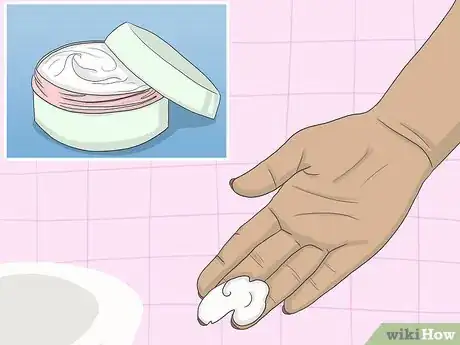


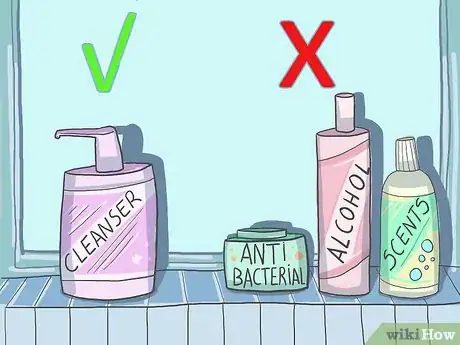




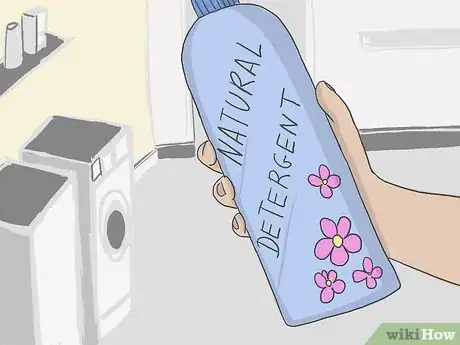
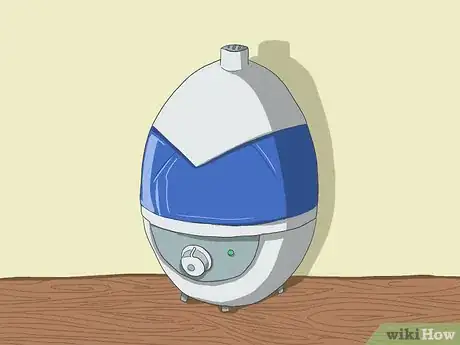




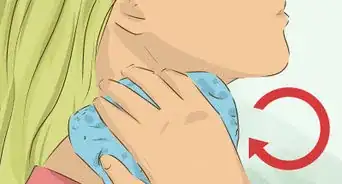
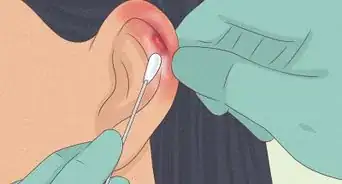



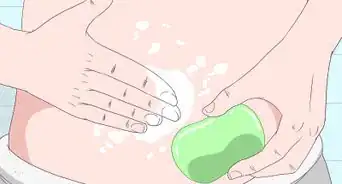
-Electric-Shock-Step-9.webp)

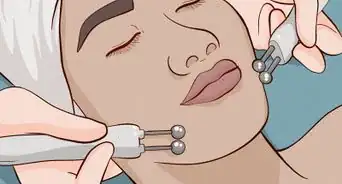



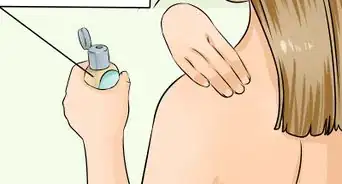









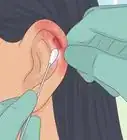




































Medical Disclaimer
The content of this article is not intended to be a substitute for professional medical advice, examination, diagnosis, or treatment. You should always contact your doctor or other qualified healthcare professional before starting, changing, or stopping any kind of health treatment.
Read More...